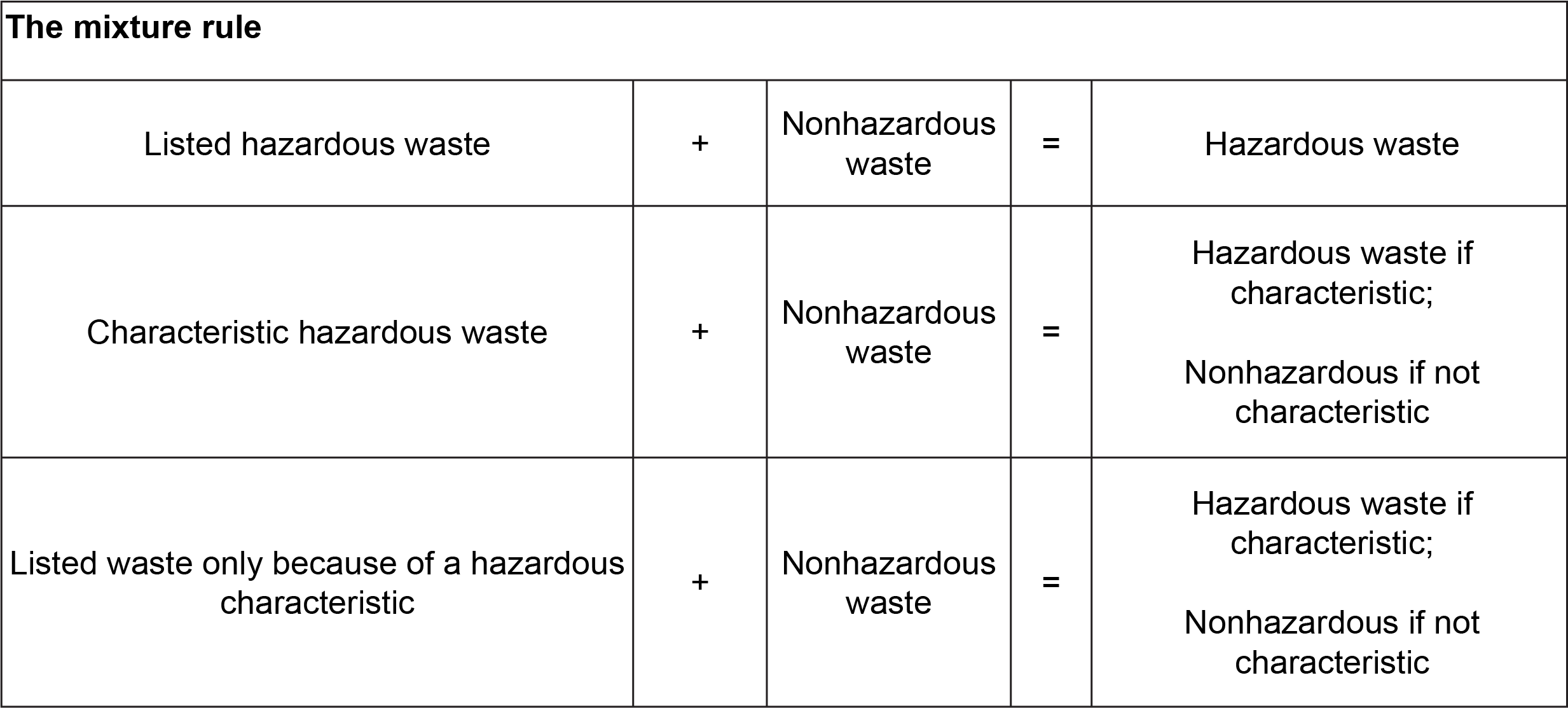The mixture rule and the Derived-From Rule

- The mixture rule says that if a facility has a listed waste mixed with a nonhazardous waste, then the entire solution will be a hazardous waste.
- VSQGs of hazardous waste are not subject to the mixture rule.
It is generally a good idea to avoid mixing wastes; however, the mixture rule at 261.3(a)(2) applies if the facility mixes hazardous and nonhazardous wastes. The mixture rule says that if a facility has a listed waste mixed with a nonhazardous waste, then the entire solution will be a hazardous waste. This is why a facility should be very careful with mixing wastes — a facility could end up with much more hazardous waste than intended! For example, if someone pours a halogenated solvent into a full drum of used oil, the entire drum of used oil will now be a hazardous waste.
However, if a facility mixes a characteristic hazardous waste with a nonhazardous waste and the facility ends up with a mixture that does not exhibit a hazardous characteristic, then the mixture can be considered a nonhazardous waste. For example, if someone mixes an acid waste with a basic waste to neutralize it, if the resulting mixture does not test positive for corrosivity (or any other hazardous waste characteristic), then the mixture would not be a hazardous waste. Note that even if a facility treats a waste, it may still be subject to land disposal restrictions in 40 CFR 268.
Finally, the mixture rule says that if a facility has a listed waste that was only listed because it exhibits a hazardous waste characteristic and the facility mixes it with a nonhazardous waste, if the resulting mixture tests as nonhazardous, then the waste is not hazardous.
The table below summarizes the basics of the mixture rule:

Note that very small quantity generators (VSQGs) of hazardous waste are not subject to the mixture rule. They are allowed to mix solid and hazardous wastes together (even if the mixture exceeds the VSQG’s monthly quantity limits), as long as the resulting mixture does not exhibit a hazardous characteristic.
The Derived-From Rule at 261.3(c) covers materials — or residues — that result from treating a listed hazardous waste or a characteristic hazardous waste that continues to exhibit a characteristic. This rule is also known as the “Listed In, Listed Out” rule: Once a facility has a listed waste, the facility always has a listed waste. So even if the facility treats it, the waste will have been “derived from” a listed waste.
However, if the facility treats a characteristic waste, the facility must test the resulting material to see if it still exhibits a characteristic of hazardous waste.
